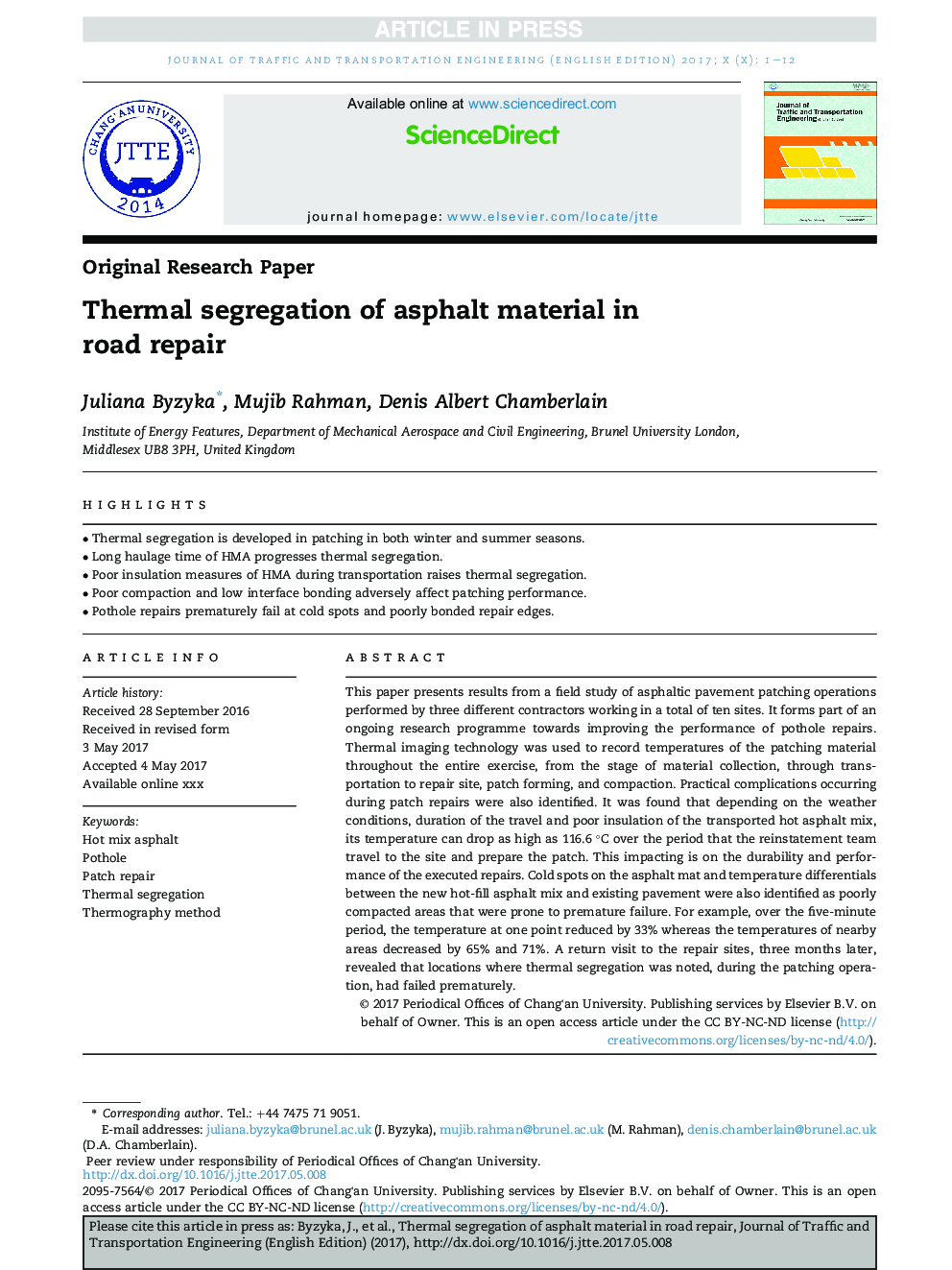| Article ID | Journal | Published Year | Pages | File Type |
|---|---|---|---|---|
| 6756760 | Journal of Traffic and Transportation Engineering (English Edition) | 2017 | 12 Pages |
Abstract
This paper presents results from a field study of asphaltic pavement patching operations performed by three different contractors working in a total of ten sites. It forms part of an ongoing research programme towards improving the performance of pothole repairs. Thermal imaging technology was used to record temperatures of the patching material throughout the entire exercise, from the stage of material collection, through transportation to repair site, patch forming, and compaction. Practical complications occurring during patch repairs were also identified. It was found that depending on the weather conditions, duration of the travel and poor insulation of the transported hot asphalt mix, its temperature can drop as high as 116.6 °C over the period that the reinstatement team travel to the site and prepare the patch. This impacting is on the durability and performance of the executed repairs. Cold spots on the asphalt mat and temperature differentials between the new hot-fill asphalt mix and existing pavement were also identified as poorly compacted areas that were prone to premature failure. For example, over the five-minute period, the temperature at one point reduced by 33% whereas the temperatures of nearby areas decreased by 65% and 71%. A return visit to the repair sites, three months later, revealed that locations where thermal segregation was noted, during the patching operation, had failed prematurely.
Keywords
Related Topics
Physical Sciences and Engineering
Engineering
Aerospace Engineering
Authors
Juliana Byzyka, Mujib Rahman, Denis Albert Chamberlain,
